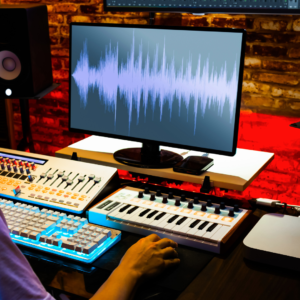Improvisation stands at the heart of jazz music, serving as both the foundation and the driving force behind its creativity. This spontaneous musical expression allows artists to convey their emotions and stories in real-time, creating a unique experience for both the performer and the audience. Each performance becomes an opportunity for exploration, where musicians push the boundaries of melody, harmony, and rhythm.
Throughout jazz history, improvisation has taken various forms, from the elegant solos of a saxophonist to the complex interplay between a rhythm section. It fosters a vibrant dialogue among musicians, encouraging collaboration and innovation. This element of unpredictability distinguishes jazz from other genres, ensuring that no two performances are ever the same.
As listeners engage with jazz, they witness the magic of musicians weaving their individual ideas into a collective tapestry. The improvisational aspect invites audiences to appreciate the skill and intuition required to create music spontaneously. By understanding this role, one can better grasp the essence of jazz and its enduring appeal in the music world.
Historical Context of Improvisation in Jazz
Improvisation has been a fundamental element of jazz music since its inception. This section explores the origins of jazz and its early improvisational practices, the evolution of these techniques over time, and the key figures who shaped the improvisational landscape of jazz.
Origins of Jazz and Early Improvisation
Jazz originated in the early 20th century, largely influenced by African American musical traditions, blues, and ragtime. In New Orleans, musicians blended their cultures and created a unique sound that emphasized spontaneous creation.
Early jazz featured collective improvisation where multiple musicians would weave melodies and rhythms without pre-arranged structures. This style was prevalent in bands that played in dance halls and parades. Key instruments included cornet, clarinet, and trombone, which contributed to lively, intricate exchanges during performances.
The Evolution of Jazz Improvisation
As jazz spread beyond New Orleans, the 1920s saw the development of more structured forms of improvisation. Musicians began to explore harmony and chords, leading to more complex solos. The use of scales, modes, and rhythmic variation became essential techniques for improvisers.
By the 1940s, bebop emerged, focusing on fast tempos and intricate melodies. Pioneers like Charlie Parker and Dizzy Gillespie pushed the boundaries of improvisation, introducing innovative harmonic concepts. This shift laid the groundwork for further experimentation in jazz, bringing forth styles like cool jazz and free jazz in subsequent decades.
Influential Jazz Improvisers
Numerous musicians have significantly shaped improvisation in jazz. Louis Armstrong is often credited for popularizing the soloist’s role through his groundbreaking trumpet performances. His innovative approach influenced countless musicians.
Charlie Parker revolutionized improvisation by integrating advanced harmonic concepts into his solos. His ability to create intricate melodies added depth to the genre. Miles Davis also played a crucial role, particularly with his modal jazz approach, which encouraged the exploration of scales rather than strict chord changes.
Other notable improvisers include John Coltrane, whose intense explorations set new standards for expressive freedom, and Thelonious Monk, known for his unique phrasing and rhythm. These artists not only defined their sound but also laid the groundwork for future improvisational styles in jazz.
The Theory Behind Jazz Improvisation
Jazz improvisation hinges on a deep understanding of musical elements, scales, and chord progressions. These components are vital for musicians to create spontaneous and cohesive musical expressions.
Musical Elements in Jazz Improvisation
In jazz, musicians rely on various musical elements to shape their improvisations. Rhythm plays a crucial role, as syncopation and swing give jazz its unique feel. Musicians often vary their phrasing and tempo, enhancing expressiveness.
Melody is also significant. Improvisers develop motifs, using call-and-response techniques to interact with other musicians. This creates a conversational dynamic essential to jazz.
Harmony underpins much of jazz improvisation. Musicians must navigate complex chords while creating melodies that complement these harmonic structures. Mastery of these elements allows them to articulate their ideas effectively.
Common Jazz Scales and Chord Progressions
Jazz musicians utilize specific scales to construct melodies during improvisation. Common scales include the blues scale, major scale, and minor scale. Each scale contributes to different emotional colors in the music.
Chord progressions are equally important. The ii-V-I progression is a foundational structure that appears in many jazz standards. This progression leads smoothly from one harmonic area to another, providing a framework for improvisation.
A few common jazz chord progressions include:
- I – vi – ii – V
- ii – V – I
- I – IV – V
Understanding these scales and progressions equips musicians to make informed choices in their improvisation, contributing to a rich and vibrant jazz experience.
The Practice of Jazz Improvisation
Jazz improvisation is a skill honed through education, collaboration, and attentive listening. Mastering these aspects is essential for musicians to express their creativity while engaging with the rich tradition of jazz.
Learning and Education in Jazz
Jazz education typically begins with foundational knowledge of music theory and the jazz vocabulary. Musicians study scales, chords, and progressions that are essential for improvisation.
Many musicians participate in formal programs or workshops that focus on improvisation techniques. They often practice with backing tracks or in ensemble settings, allowing them to apply their skills in real-time.
Self-taught musicians might explore recordings of iconic jazz artists. Analyzing solos and transcribing them develops both technical proficiency and personal style. This combination of formal training and self-study creates a well-rounded improvisational skill set.
Collaboration and Interaction Among Musicians
Improvisation in jazz is inherently social. It thrives on the interaction among musicians, often referred to as a “conversation” within the music.
This dialogue requires attentiveness and responsiveness, with each musician making adjustments based on the others’ plays. For instance, a drummer might change rhythms to complement a soloist’s phrasing while a bassist locks in on the harmonic structure.
Jam sessions are a popular way to foster this collaborative spirit. Musicians come together to experiment and share ideas, often leading to spontaneous creativity and innovation. Building rapport with other players enhances the improvisational process significantly.
Modes of Listening for Improvisation
Effective improvisation hinges on different modes of listening. Musicians actively listen to their bandmates, assessing dynamics, nuances, and mood. This acute awareness enables them to respond appropriately and enhance the musical conversation.
There are various listening practices, such as thematic listening, where one focuses on melodic lines, or harmonic listening, which emphasizes chord progressions.
Active listening extends to diverse influences as well. Musicians might draw inspiration from various genres, integrating those elements into their improvisation. This enriches their musical language and broadens their improvisational palette, allowing for a unique expression in real-time performance.





